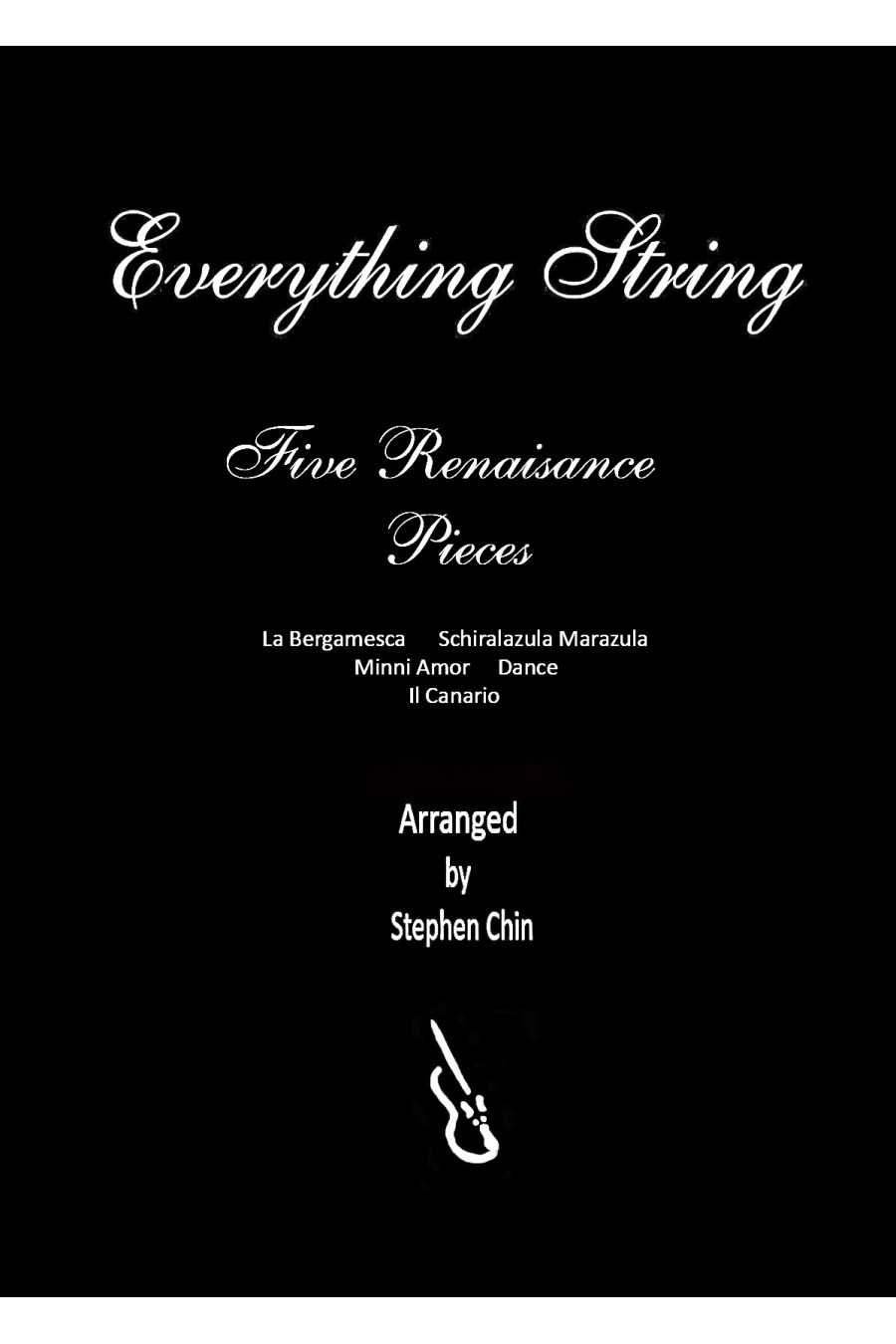
The Silver Forest By Stephen Chin
In a snowy, mythical forest, knights ride fiercely, battling dark forces. Your orchestra will enjoy the haunting melodies and thrilling momentum.
For String Orchestra Grade 1.5
An excellent piece to introduce Early Music to students. Most rhythms are simple, with some quavers in the first violin part. Improvised percussion parts can be added for authenticity.
1. La Bergamesca
2. Schiralazula Marazula
3. Minni Amor
4. Dance
5. Il Canario
For String Orchestra Grade 1
This piece of music is an excellent resource for educators looking to introduce their students to the beauty of Early Music. Its simple yet captivating rhythms, mostly composed of crotchets and minims, with a few quavers in the first violin part, make it a great starting point. To enhance the authenticity of the performance and give it a more genuine sound, some improvised percussion parts can be included based on the performance practices of this period.
1. La Bergamesca
2. Schiralazula Marazula
3. Minni Amor
4. Dance
5. Il Canario
For String Orchestra Grade 1
In a snowy, mythical forest, knights ride fiercely, battling dark forces. Your orchestra will enjoy the haunting melodies and thrilling momentum.
For String Orchestra Grade 1.5
Ghost ships have been a mystery for centuries, dating back to ancient Greek mythology. The music piece starts with an eerie opening and transitions into an alluring theme, played by the first section, which is later repeated by other sections. The "Sailor's Dance" is an energetic and attractive tune featuring a group of soloists before a stirring conclusion.
1. Ghost Ship
2. Sailors Dance
For String Orchestra Grade 1.5
The Swans of Lir is an Irish legend about young children turned into swans by dark forces. The melody and accompaniments in "The Lake" reflect their helplessness, while "The Rejoicing" celebrates their eventual transformation back into children. The piece is scored for strings, recorders and percussion and is perfect for large concerts or festivals.
This work alludes to Noah's Flood and the rainbow as a symbol of peace. The dream-like opening leads to a turbulent episode with a shared theme. Second orchestra parts are optional but exciting. Great for players of different levels.
For Intermediate and optional Elementary Strings - Grade 2 & 1
A musical arrangement for strings, percussion, and voice with four memorable Australian folk tunes that are easy to sing along to. The vocal part can be sung by a soloist or choir, and the lyrics are included. The piece can also be played as an instrumental work.
For Full Orchestra and Voice Grade 3
Intense and emotional, the music evokes feelings of desperation, anxiety, and frenzy. The dark tones of G minor and rapid rhythm create a menacing atmosphere. The hammering rhythm eventually overtakes a noble melody played by the cellos.
For String Orchestra Grade 3.5
Introduce your students to Russian classical music with "Pictures at an Exhibition" by Mussorgsky. "Promenade" links various pieces, while "Danse Caracteristique" features harmonics, syncopated accompaniments, and chromatic scales.
1. Promenade (Mussorgsky)
2. Dance Caracteristique (Rebikov)
For String Orchestra level 2.5